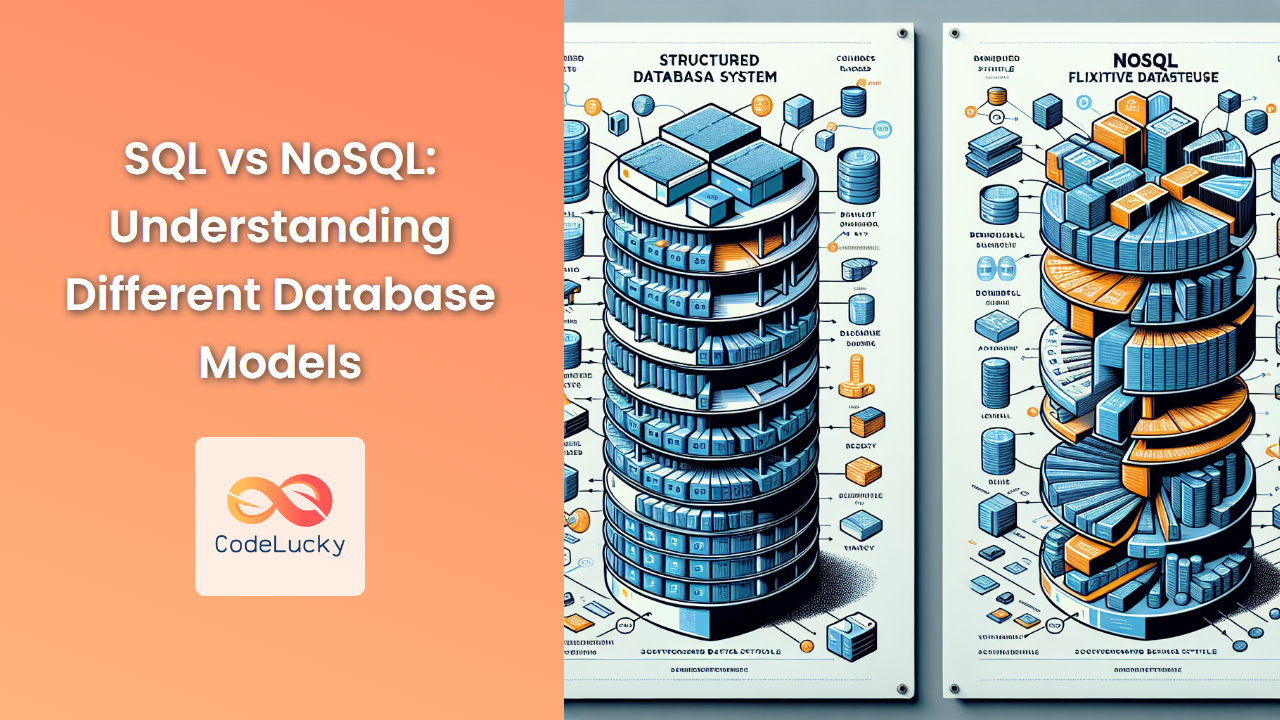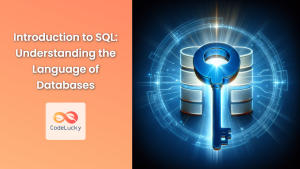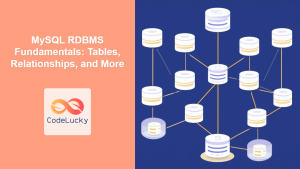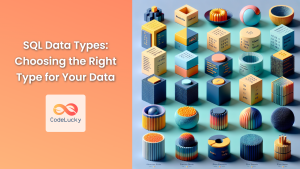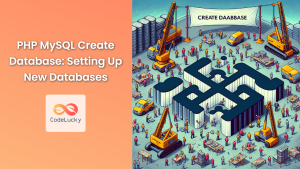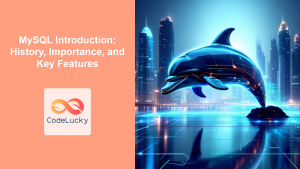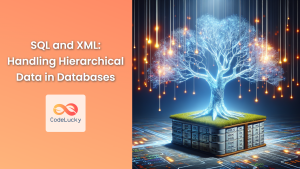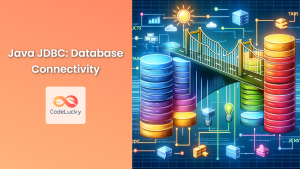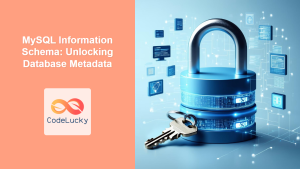In the ever-evolving world of data management, two primary database models have emerged as the frontrunners: SQL (Structured Query Language) and NoSQL (Not Only SQL). These models represent fundamentally different approaches to storing, retrieving, and managing data. Understanding the distinctions between SQL and NoSQL databases is crucial for developers, data scientists, and IT professionals to make informed decisions about which technology best suits their specific needs.
SQL Databases: The Relational Powerhouse
SQL databases, also known as relational databases, have been the backbone of data management for decades. They are based on the relational model, which organizes data into tables with predefined schemas.
Key Characteristics of SQL Databases:
-
Structured Data: SQL databases use a rigid, predefined schema that determines the structure of the data before it's inserted.
-
ACID Compliance: SQL databases typically adhere to ACID (Atomicity, Consistency, Isolation, Durability) properties, ensuring data integrity and reliability.
-
Relational Model: Data is organized into tables with rows and columns, and relationships between tables are established using foreign keys.
-
Powerful Querying: SQL provides a standardized language for complex queries, joins, and aggregations.
-
Vertical Scalability: SQL databases generally scale vertically by adding more power to the existing server.
Example: Creating and Querying a SQL Database
Let's create a simple example of a SQL database for a bookstore:
-- Create Tables
CREATE TABLE Authors (
AuthorID INT PRIMARY KEY,
Name VARCHAR(100),
Country VARCHAR(50)
);
CREATE TABLE Books (
BookID INT PRIMARY KEY,
Title VARCHAR(200),
AuthorID INT,
PublicationYear INT,
FOREIGN KEY (AuthorID) REFERENCES Authors(AuthorID)
);
-- Insert Sample Data
INSERT INTO Authors (AuthorID, Name, Country) VALUES
(1, 'George Orwell', 'United Kingdom'),
(2, 'Harper Lee', 'United States'),
(3, 'Gabriel García Márquez', 'Colombia');
INSERT INTO Books (BookID, Title, AuthorID, PublicationYear) VALUES
(101, '1984', 1, 1949),
(102, 'Animal Farm', 1, 1945),
(103, 'To Kill a Mockingbird', 2, 1960),
(104, 'One Hundred Years of Solitude', 3, 1967);
-- Query: Find all books by British authors
SELECT Books.Title, Authors.Name
FROM Books
JOIN Authors ON Books.AuthorID = Authors.AuthorID
WHERE Authors.Country = 'United Kingdom';
This query would return:
| Title | Name |
|---|---|
| 1984 | George Orwell |
| Animal Farm | George Orwell |
🔍 Key Insight: SQL databases excel at maintaining data integrity and performing complex queries across related tables. The ability to join tables and enforce relationships makes SQL databases ideal for applications where data consistency is crucial.
NoSQL Databases: Embracing Flexibility
NoSQL databases emerged as a response to the limitations of traditional SQL databases, particularly in handling large volumes of unstructured or semi-structured data.
Key Characteristics of NoSQL Databases:
-
Flexible Schema: NoSQL databases allow for dynamic, schema-less data structures that can be modified on the fly.
-
Scalability: NoSQL databases are designed to scale horizontally, making it easier to distribute data across multiple servers.
-
High Performance: For certain types of data and queries, NoSQL databases can offer superior performance compared to SQL databases.
-
Variety of Data Models: NoSQL encompasses various data models, including document-based, key-value, wide-column, and graph databases.
-
Eventually Consistent: Many NoSQL databases prioritize availability and partition tolerance over strict consistency (CAP theorem).
Example: Document-based NoSQL Database
Let's recreate our bookstore example using a document-based NoSQL approach (similar to MongoDB):
// Authors Collection
[
{
"_id": 1,
"name": "George Orwell",
"country": "United Kingdom",
"books": [
{
"title": "1984",
"publicationYear": 1949
},
{
"title": "Animal Farm",
"publicationYear": 1945
}
]
},
{
"_id": 2,
"name": "Harper Lee",
"country": "United States",
"books": [
{
"title": "To Kill a Mockingbird",
"publicationYear": 1960
}
]
},
{
"_id": 3,
"name": "Gabriel García Márquez",
"country": "Colombia",
"books": [
{
"title": "One Hundred Years of Solitude",
"publicationYear": 1967
}
]
}
]
// Query: Find all books by British authors
db.authors.find(
{ country: "United Kingdom" },
{ name: 1, "books.title": 1 }
)
This query would return:
{
"_id": 1,
"name": "George Orwell",
"books": [
{ "title": "1984" },
{ "title": "Animal Farm" }
]
}
🚀 Key Insight: NoSQL databases shine when dealing with large volumes of unstructured or semi-structured data. They offer flexibility in data modeling and can easily accommodate changing requirements without the need for complex migrations.
SQL vs NoSQL: A Comparative Analysis
To better understand when to use SQL or NoSQL databases, let's compare them across various dimensions:
1. Data Structure
- SQL: Rigid, predefined schema with tables and columns.
- NoSQL: Flexible, schema-less structure that can vary between documents.
2. Scalability
- SQL: Primarily vertical scalability (scaling up).
- NoSQL: Primarily horizontal scalability (scaling out).
3. ACID Compliance
- SQL: Typically fully ACID compliant.
- NoSQL: Often sacrifices some ACID properties for performance and scalability.
4. Query Language
- SQL: Standardized SQL language across most relational databases.
- NoSQL: Database-specific query languages or APIs.
5. Joins and Relationships
- SQL: Supports complex joins and relationships between tables.
- NoSQL: Limited support for joins; relationships often handled in application code.
6. Use Cases
- SQL:
- Financial systems
- E-commerce platforms
- Content management systems
- NoSQL:
- Real-time big data applications
- Content delivery networks
- IoT data storage
Making the Right Choice: SQL or NoSQL?
Choosing between SQL and NoSQL databases depends on various factors. Here are some guidelines to help you make an informed decision:
Choose SQL when:
-
Data integrity is crucial: If your application requires strict data consistency and ACID compliance, SQL databases are typically the better choice.
-
Complex queries are needed: SQL excels at handling complex queries, joins, and aggregations across multiple tables.
-
Relationships are important: If your data has many interconnected relationships, SQL's relational model can represent these efficiently.
-
Transactions are required: For applications that need multi-operation transactions, SQL databases provide better support.
Choose NoSQL when:
-
Handling large volumes of unstructured data: NoSQL databases can efficiently store and retrieve vast amounts of unstructured or semi-structured data.
-
Rapid development and iteration: The flexible schema of NoSQL databases allows for quicker iterations and easier changes to data models.
-
Horizontal scalability is needed: If your application needs to scale out across multiple servers, NoSQL databases are often easier to distribute.
-
Real-time data processing: Many NoSQL databases are optimized for high-speed read/write operations, making them suitable for real-time applications.
Hybrid Approaches: The Best of Both Worlds
In some cases, using a combination of SQL and NoSQL databases can provide the optimal solution. This approach, known as polyglot persistence, allows you to leverage the strengths of both database models within a single application.
Example Scenario: E-commerce Platform
Consider an e-commerce platform that needs to handle:
- User accounts and orders (structured data)
- Product catalogs with varying attributes (semi-structured data)
- User session data and shopping carts (high-speed read/write)
In this scenario, you might use:
- SQL database: For user accounts, orders, and financial transactions.
- Document-based NoSQL database: For product catalogs with flexible schemas.
- Key-value NoSQL database: For user sessions and shopping carts.
-- SQL Database: User Orders
CREATE TABLE Orders (
OrderID INT PRIMARY KEY,
UserID INT,
TotalAmount DECIMAL(10, 2),
OrderDate DATETIME
);
-- NoSQL Document Database: Product Catalog
{
"_id": "prod123",
"name": "Wireless Headphones",
"brand": "AudioTech",
"price": 99.99,
"features": [
"Noise cancellation",
"40-hour battery life",
"Bluetooth 5.0"
],
"colors": ["Black", "White", "Blue"]
}
-- NoSQL Key-Value Database: Shopping Cart
Key: "user456_cart"
Value: {
"items": [
{"productId": "prod123", "quantity": 1},
{"productId": "prod789", "quantity": 2}
],
"lastUpdated": "2023-05-15T14:30:00Z"
}
🔧 Key Insight: By combining different database models, you can optimize your data storage and retrieval for specific use cases within your application, potentially improving overall performance and scalability.
Performance Considerations
When comparing SQL and NoSQL databases, performance is a crucial factor to consider. However, it's important to note that performance can vary greatly depending on the specific use case, data model, and implementation.
SQL Performance Characteristics:
-
Indexed Queries: SQL databases excel at queries on indexed columns, providing fast lookups for structured data.
-
Join Operations: While powerful, complex joins can become performance bottlenecks as data volume increases.
-
ACID Compliance: The overhead of maintaining ACID properties can impact write performance in high-concurrency scenarios.
NoSQL Performance Characteristics:
-
Read/Write Speed: Many NoSQL databases are optimized for high-speed read and write operations on large volumes of data.
-
Scalability: Horizontal scaling allows NoSQL databases to maintain performance as data and traffic grow.
-
Denormalization: NoSQL often uses denormalized data models, reducing the need for joins but potentially increasing data redundancy.
Performance Comparison Example
Let's compare the performance of a simple query in SQL and NoSQL:
Scenario: Retrieve all books published after 2000.
SQL Query:
SELECT Title, PublicationYear
FROM Books
WHERE PublicationYear > 2000;
NoSQL Query (MongoDB-style):
db.books.find(
{ publicationYear: { $gt: 2000 } },
{ title: 1, publicationYear: 1 }
)
While the syntax differs, both queries can be optimized for performance:
- In SQL, an index on the
PublicationYearcolumn would significantly speed up the query. - In NoSQL, appropriate indexing and data modeling (e.g., storing publication year at the top level of the document) can achieve similar performance benefits.
🏎️ Key Insight: The performance difference between SQL and NoSQL databases often comes down to how well the data model and queries are optimized for the specific use case, rather than inherent superiority of one model over the other.
Data Consistency and the CAP Theorem
When discussing SQL and NoSQL databases, it's crucial to understand the CAP theorem, which states that a distributed database system can only guarantee two out of three properties: Consistency, Availability, and Partition tolerance.
SQL and the CAP Theorem
Most traditional SQL databases prioritize consistency and availability (CA), sacrificing some level of partition tolerance. This means they ensure data is always consistent and available, but may struggle in distributed environments where network partitions are common.
NoSQL and the CAP Theorem
NoSQL databases often prioritize availability and partition tolerance (AP), allowing for eventual consistency. This trade-off enables them to scale horizontally and handle network partitions more effectively, but it may result in temporary data inconsistencies across nodes.
Example: Eventual Consistency in NoSQL
Consider a NoSQL database for a social media application:
// User document
{
"_id": "user123",
"username": "johndoe",
"followers": 1000
}
// Update operation: Increment follower count
db.users.updateOne(
{ _id: "user123" },
{ $inc: { followers: 1 } }
)
In a distributed NoSQL system, this update might not be immediately reflected across all nodes. Different reads might temporarily show different follower counts until the system reaches eventual consistency.
🔄 Key Insight: The choice between SQL and NoSQL often involves deciding which CAP theorem properties are most critical for your application. SQL's strong consistency model is beneficial for financial transactions, while NoSQL's eventual consistency can be suitable for social media feeds or content delivery networks.
Security Considerations
Both SQL and NoSQL databases offer security features, but their approaches can differ:
SQL Security:
- User Authentication: Robust user authentication and role-based access control.
- Data Encryption: Support for encryption at rest and in transit.
- SQL Injection Prevention: Parameterized queries and stored procedures help prevent SQL injection attacks.
NoSQL Security:
- Flexible Authentication: Often supports various authentication mechanisms, including OAuth and LDAP.
- Field-Level Encryption: Some NoSQL databases offer field-level encryption for sensitive data.
- API-Based Access: Many NoSQL databases are accessed via APIs, which can be secured using API keys and tokens.
Security Example: Protecting Sensitive Data
SQL Approach:
-- Encrypt sensitive data
CREATE TABLE Users (
UserID INT PRIMARY KEY,
Username VARCHAR(50),
PasswordHash VARBINARY(64),
Email VARCHAR(100) ENCRYPTED WITH (COLUMN_ENCRYPTION_KEY = CEK_Auto1, ENCRYPTION_TYPE = Deterministic)
);
-- Insert user with encrypted email
INSERT INTO Users (UserID, Username, PasswordHash, Email)
VALUES (1, 'johndoe', HASHBYTES('SHA2_256', 'password123'), '[email protected]');
NoSQL Approach (MongoDB with field-level encryption):
const encrypted = clientEncryption.encrypt(
'[email protected]',
{
algorithm: 'AEAD_AES_256_CBC_HMAC_SHA_512-Deterministic',
keyAltName: 'emailEncryptionKey'
}
);
db.users.insertOne({
username: 'johndoe',
passwordHash: crypto.createHash('sha256').update('password123').digest('hex'),
email: encrypted
});
🔒 Key Insight: Both SQL and NoSQL databases offer robust security features. The choice often depends on your specific security requirements and the expertise of your development team in implementing and maintaining database security.
Future Trends: SQL and NoSQL Convergence
As database technologies evolve, we're seeing a trend towards convergence between SQL and NoSQL models. Many modern databases are adopting features from both paradigms, blurring the lines between traditional categories.
NewSQL: Combining SQL and NoSQL Benefits
NewSQL databases aim to provide the ACID guarantees of traditional SQL databases while achieving the scalability and performance of NoSQL systems. Examples include Google Spanner and CockroachDB.
SQL Features in NoSQL Databases
Many NoSQL databases are incorporating SQL-like query languages or even full SQL support. For example, Apache Cassandra introduced the Cassandra Query Language (CQL), which is similar to SQL.
Document Model Support in SQL Databases
Traditional SQL databases are adding support for document-based data models. PostgreSQL, for instance, has a JSONB data type that allows for efficient storage and querying of JSON documents within a relational structure.
Example: JSON in PostgreSQL
CREATE TABLE Products (
ProductID INT PRIMARY KEY,
Name VARCHAR(100),
Details JSONB
);
INSERT INTO Products (ProductID, Name, Details)
VALUES (1, 'Smartphone',
'{"brand": "TechCo", "model": "X1", "specs": {"ram": "8GB", "storage": "128GB"}}');
-- Query JSON data
SELECT Name, Details->>'brand' AS Brand
FROM Products
WHERE Details->>'model' = 'X1';
This example demonstrates how modern SQL databases can handle semi-structured data typically associated with NoSQL systems.
🔮 Key Insight: The future of databases likely involves a hybrid approach, combining the strengths of both SQL and NoSQL models. As these technologies converge, developers will have more flexible and powerful tools to handle diverse data management needs.
Conclusion: Choosing the Right Database for Your Needs
The choice between SQL and NoSQL databases is not a one-size-fits-all decision. It depends on various factors, including:
- Data Structure: Is your data highly structured or more flexible?
- Scalability Requirements: Do you need to scale vertically or horizontally?
- Consistency Needs: Is strong consistency crucial, or is eventual consistency acceptable?
- Query Complexity: Do you need to perform complex joins and aggregations?
- Development Speed: How important is rapid iteration and schema flexibility?
- Team Expertise: What database technologies is your team most familiar with?
By carefully considering these factors and understanding the strengths and weaknesses of both SQL and NoSQL databases, you can make an informed decision that best suits your project's needs.
Remember, it's also possible to use both SQL and NoSQL databases within the same application, leveraging each for its strengths. As database technologies continue to evolve and converge, the lines between SQL and NoSQL will likely become increasingly blurred, offering developers even more powerful and flexible data management solutions.
Ultimately, the goal is to choose a database solution that enables you to efficiently store, retrieve, and manage your data while meeting your application's performance, scalability, and consistency requirements. Whether you choose SQL, NoSQL, or a hybrid approach, understanding the fundamental differences and use cases for each will help you make the best decision for your specific needs.
- SQL Databases: The Relational Powerhouse
- NoSQL Databases: Embracing Flexibility
- SQL vs NoSQL: A Comparative Analysis
- Making the Right Choice: SQL or NoSQL?
- Hybrid Approaches: The Best of Both Worlds
- Performance Considerations
- Data Consistency and the CAP Theorem
- Security Considerations
- Future Trends: SQL and NoSQL Convergence
- Conclusion: Choosing the Right Database for Your Needs

